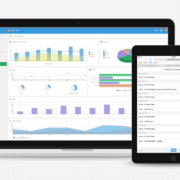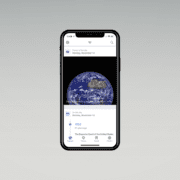What’s Involved In Maintaining A Mobile App?
Input cost is always a primary consideration when embarking on the app development journey. That makes sense when a simple mobile app costs about $37,500 while a complex app is north of $500,000. Undoubtedly, designing and developing an app is a substantial investment that company leaders need to comprehend. But they also need to understand the importance of maintaining their applications after releasing them.
User expectations have risen considerably, and they seldom put up with buggy, obtrusive, and unengaging apps. That’s why it’s vital to listen to user feedback and roll out the necessary bug fixes and content updates. However, this is an ongoing process that increases the likelihood of — keeping users hooked — when done correctly. Below, we’ll take a deeper look at what’s involved in maintaining a mobile app.
1. App Development Is Ongoing
Pushing an application out the door is only part of the app development process. And the reason for this is that an app is never truly finished if it’s going to enjoy long-term success. There’s no shortage of applications in the App Store and Google Play, which means that users have an almost endless amount of options. Therefore, they’ll quickly delete lackluster apps to make space for those that seem more promising.
Many users have no qualms about removing applications that have intrusive in-app purchases, poor UX, security vulnerabilities, technical issues, unnecessary features, and when they lack content or violate user privacy. However, you can avoid or reduce the frequency of these issues by regularly rolling out updates for your apps.
2. Hidden Mobile App Costs
Developing applications comes with its fair share of hidden mobile app costs. Back-end hosting, gathering user feedback, keeping up with OS updates, maintaining a developer account, supporting new devices, and providing maintenance and support, all cost time and money. Since an app requires regular updates during its life cycle, the costs of maintaining and supporting it may exceed its initial development costs.
3. Listening To User Feedback And Requests
The apps that succeed are those made by developers that take user feedback seriously. That’s why you should always be listening to user feedback and responding to their requests timeously. Look out for reviews left by experts and regular users in the app stores, and always make sure to respond with the necessary bug fixes, updates, or replies.
Their feedback will also help shape your app since you’ll gradually implement features and improvements that users want. Furthermore, by understanding user behavior you won’t waste resources on unnecessary content and features.
4. Pushing New Content
It’s vital to keep users engaged so that they don’t lose interest in your app. A good way to achieve this is by pushing new content at regular intervals. And one of the most efficient ways to notify your users about these changes is with push notifications. But there’s a push notification cost that you’ll need to consider. While several analytics platforms and vendors offer a free tier to help you get started, eventually, you’ll need to invest in a paid service to increase your reach.
The Bottom Line
Maintaining a mobile app is an essential part of the app development process. And doing it right means that you’re ascertaining all the hidden mobile app costs and listening to user feedback. Furthermore, you’re taking advantage of push notifications and applying the right strategies to keep your push notification cost as low as possible. Contact us today to learn how NS804 can help you develop and maintain engaging mobile apps.













Leave a Reply
Want to join the discussion?Feel free to contribute!